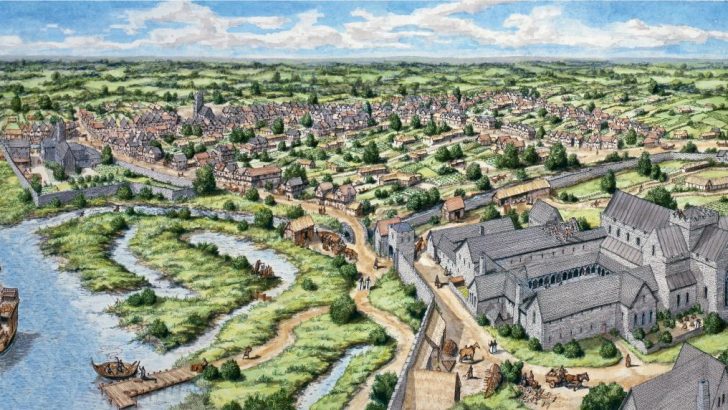Mainly about books
by the books editor
St Mary’s Abbey in Dublin was founded, according to the Annals of the Four Masters, in 846. Over the coming centuries it in grew in size into an important ecclesiastical institution, eventually holding the country’s largest library.
The nature of such places began to change with the arrival of St Malachi, who brought about the conversion of the older Celtic monastic settlements into monasteries and abbeys in the new Continental mode. This was a generation before the arrival of the Normans, who only confirmed the movement within the Church to more European ways. In 1303, however, a fire started for political reasons destroyed St Mary’s Abbey, which had to be rebuilt and refitted, to once again hold the most influential library in Ireland.
The Abbey stood on the north bank of the River Liffey, outside the bounds of the original Norse city, in the area where Mary Street stands today. In the little side street still called St Mary’s Abbey there survived its chapter house (now in the hands of the OPW). This is the setting of an amusing episode in Ulysses.
The site of the old abbey was discovered in the 1880s by an amateur archaeologist and was widely publicised. So much rubbish had been dug out of the place by the end of the 19th Century to clear it up that in some Dublin families ‘Mary’s Abbey’ became a proverbial nick-name for an untidy teenager’s bedroom.
This place was prized by many because it was here that Silken Thomas in 1534 threw down his challenge to the king of England.
Upheavals
This fragment was all that remains of the Abbey because the whole place was closed down at the time of the Reformation, and the buildings and the site were sold off to a person one might now call a developer. Some of the stones, however, went to build a much needed new bridge across the river.
The books, like so many collections during the Protestant upheavals in these islands, were cast to the four winds. Of that legendary collection only five books are now known for certain to exist. The most recent one indentified, now safely preserved in TCD, contains an array of medieval manuscripts of the first interest. Academic studies of it are only beginning, it having been in private hands for over a century.
In some Dublin families ‘Mary’s Abbey’ became a proverbial nick-name for an untidy teenager’s bedroom…”
This sad story casts a brilliant light on the destruction of our island’s culture in the past, sometimes at the hands of native princes and passionate patriots. That fire in 1303 destroyed the city records held there in chancery, so the blame for the destruction of our past can be fairly shared between the opposing sides over the course of time.
Eamon Duffy’s Marking the Hours (2006) shows just how much can be learnt by the careful examination of religious books, especially private and personal prayer books. His account of “the English people and their prayers, 1240-1570”, illustrates perhaps just what we have lost here in Ireland by destruction, but also by thoughtlessness in dealing with religious libraries.
The announcement that the famous Jesuit library at Milltown Park has now found safe sanctuary from the whims of individuals in the St Patrick’s campus of DCU, is great news, for it is a move which will grant it many years to come of continuing service to the community in aiding the education of future students, our children and grandchildren perhaps, in the nature and history of religion.
Perhaps in time further research will also disclose much more about the library of St Mary’s Abbey – we may then have less to lament about concerning our past losses.


 Peter Costello
Peter Costello Depiction of St Marys Abbey
Photo: Dublin Decoded
Depiction of St Marys Abbey
Photo: Dublin Decoded 